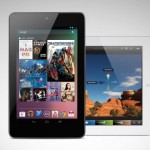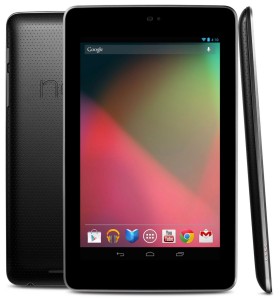2012 Tablet Buying Guide
 Barely more than a year ago, tablets were little more than overpriced Netbooks without keyboards, and there were plenty of arguments against buying a tablet, favoring laptops and Ultrabooks. Those tides are starting to change, and there are now quite a few compelling arguments in favor of tablets. So if you’re in the market for a new tablet, what are your best options?
Barely more than a year ago, tablets were little more than overpriced Netbooks without keyboards, and there were plenty of arguments against buying a tablet, favoring laptops and Ultrabooks. Those tides are starting to change, and there are now quite a few compelling arguments in favor of tablets. So if you’re in the market for a new tablet, what are your best options?
If you’re an iPhone owner, you’ll know exactly what to expect from an iPad – they’re almost identical except for the larger screen. The new iPad’s greatest strength is its “Retina” display. At 2048×1536, the display really is unrivaled, though 1080p displays of the competition do offer many of the same perks. The new iPad is also one of the faster tablets on the market, though even older tablets, such as the iPad 2 can still keep up.
Another huge perk the new iPad has to offer is its cellular options. It’s one of the few tablets that offers LTE 4G connectivity and has options for both Verizon and AT&T. If you think you might want to have a data plan with your tablet, the new iPad is definitely one of the best choices.
Asus’ entire Transformer line is by far the least compromising tablets on the market, primarily thanks to the optional keyboard dock. While the keyboard dock is a bit pricey, it gives you nearly all of the benefits of a laptop and even improves on battery life.
The Transformer Pad Infinity, in particular, is an excellent alternative to the new iPad. It’s 1920×1200 resolution display, while not quite as luxurious as Apple’s, is well suited for just about any task, and its 1.6GHz Tegra 3 processor is arguably the fastest on the market.
Up until recently, any worthwhile tablet started around $500, and although there were more affordable options, they all sacrificed so much in terms of features and performance that they simply weren’t worth it. That all started to change when Amazon launched the Kindle Fire at just $200, and Google took that a step further.
Where the Kindle Fire dropped things like the cameras and GPS to keep costs down, the Nexus 7 has all of that plus NFC, a higher resolution display, and a blazing fast quad-core Tegra 3 processor. It’s also the very first device with Android 4.1 Jelly Bean, and as part of the Nexus line, it will continue to be among the first devices to receive Android updates. If you’re in the market for a 7-inch tablet (or just something on the more affordable side), the Nexus 7 is absolutely the best choice.
While it’s not actually a tablet, the Galaxy Note is a rather large smartphone that definitely reaches into the tablet realm. Unlike all of the other tablets, the Galaxy Note can be used as your primary cell phone, which means you don’t need a separate data plan. Its 5-inch screen isn’t quite as roomy as the 7-inch Nexus 7, and it does miss out on some of the tablet-specific features. It does offer an excellent middle ground, though, and is available on AT&T and Sprint (soon on T-Mobile as well). It also might be worth your while to keep an eye out for the Galaxy Note 2, expected in a month or two.





